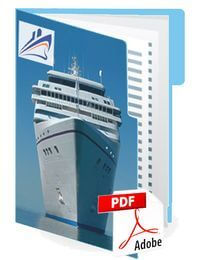Mooring bollard is a vital component of any mooring system. It is the anchor point for mooring lines to be fixed in order to secure the vessel. It is usually a short post on a quay / jetty.
Generally, design of a bollard should have a thicker diameter at the top (head / tip of the structure) to make it harder for the mooring lines to escape accidentally. It is important to provide a solid anchor point for mooring ropes. Certain designs have double bollards for ropes to be cross-fastened. Such an arrangement would provide a tighter connection. Single and double designs are both available in the market today.
Besides size & design, bollards are also categorised by their grade and load ratings. Moreover, durability is a factor when choosing a suitable bollard design as maintenance is something that end user should have in mind.
Constant inspection to spot possible deterioration
The mechanical performance of bollards may also deteriorate after some time. Durability testing has to be done. Constant inspection from time to time should be performed to confirm the bollards are working well without need of repair.
Strong forces that are very difficult to control, are often present during mooring. A strong gust of wind might cause the mooring arrangement to fail and the ship out of control. Therefore, the safety factors of bollards should not be underestimated. A 25T rated bollard should be able to withstand forces many times over.
Types of Bollards
Some of the most commonly used bollard designs today are the Single Bitt, Double Bitt, T-head, Horn (or some known as Staghorn), Kidney-shaped and some variable double head bollard designs.
Single Bitt Bollard
Also known as “US Style Pillar Bollards”, it is perfect for large tidal range berths.
Double Bitt Bollard
Some call it the “Twin Horn” or “Twin”. Small base area is space-saving for small areas.
T-head Bollard
“Tee Bollard”, “T-bollard”, this design has a top shaped like a “T”. Hence, the name. Very prominent in many parts of the world due to its simplicity and it gets the job done well up to 300 tonnes.
Horn Bollard
Some refer it to as the “Staghorn design” as well. It can accommodate very steep mooring angles.
Kidney-shaped Bollard
A simple design that is suitable when low to medium tidal range is expected.
There are of course other designs available but these are the main types present all around the world in marine use.













